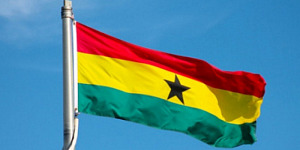(AFRICAN MARKETS) - As most African countries, Ghana has to face a major issue which is to control its rising inflation rate risk associated to a weak currency. In the short term, this requires above all, finding solutions to limit the impact of capital outflows resulting from the FED’s Quantitative Easing (QE) tapering.
Recent measures by leading African countries have shown that the rising inflation risk is at the center stage of Central Banks’ concerns. For instance, the South African Reserve Bank (the SARB) raised its repo rate by 50 bps in response to the upward revision of the CPI forecasts for 2014 and 2015. Moreover, the Central Bank of Nigeria increased its cash reserves ratio for public funds deposit to 75% (previously 50%) subsequently reducing the fund available in the market. Unsurprisingly, Ghana also reacted by adjusting its interest rate to a four year high to reach 18% (+200 bps). Sub-Saharan countries are following in steps, tightening their monetary policy in order to curb the ongoing depreciation of their currencies. But will this be enough to keep exchange rate pressures from intensifying as markets adjust to the new pattern of global capital flows? This will most certainly be a difficult task given the macroeconomic momentum which is currently hostile towards emerging markets.
Over the past few years Ghana has massively capitalized on three key areas in order to generate outstanding growth. Foreign and public investments, the commodity sector (gold, oil and cocoa) and finally government spending.
Gold being one of the main exported resources of the country, the current fall in the precious metal’s price, will result in the slowdown of the country’s GDP, and more worryingly it will worsen the Current Account Deficit. Furthermore, with lower capital inflows, one could also expect the amount of hard currency reserves, necessary to stabilize inflation and therefore the Ghanaian CEDI, to weaken. With China facing a slowdown of its economy and the US economy showing signs of steady growth, an increase in gold prices seems very unlikely in the near future.
Ghana along with other emerging countries highly benefited from the FED’s Quantitative Easing policy. Indeed, as the US economy was recovering, so was investor’s appetite for risk. In a context of very low interest rate, investors seeking for higher yield, invested massively in emerging countries, especially through bond vehicles. However, following the positive signs of the US economy, Mr. Bernanke announced the gradual tapering of the QE measures, reducing by the same occasion the market liquidity. A phenomenon of “flight back to quality” had now begun resulting in massive capital outflows from Ghana.
The graph below, which compares Ghanaian 10-year Bond yield to the US 10-year Treasury bill, clearly highlights our point. The reversal trend appears as of end of December just as the Fed announced that it would start reducing the pace of its bond buying. Consequently, foreign investors started selling Ghanaian bonds thus driving yields higher (white curve), and buying US T-Bills lowering the yield of the latter. The two securities that used to be pretty much correlated are now strongly de-correlated (lower chart) highlighting the flight to quality concept mentioned earlier.
10Y T Bill / Ghanaian 10Y Bond YTM and the spread correlation

Source: Bloomberg
With a slower growth prospect, a twin deficit (current account and Fiscal), a decrease of hard currency reserves, Ghana does not seem armed to face the current momentum and has no choice but to fully absorb the shock. The Ghanaian CEDI is still under pressure meaning that the Central Bank is still likely on a short-term to raise its interest rate.




















































